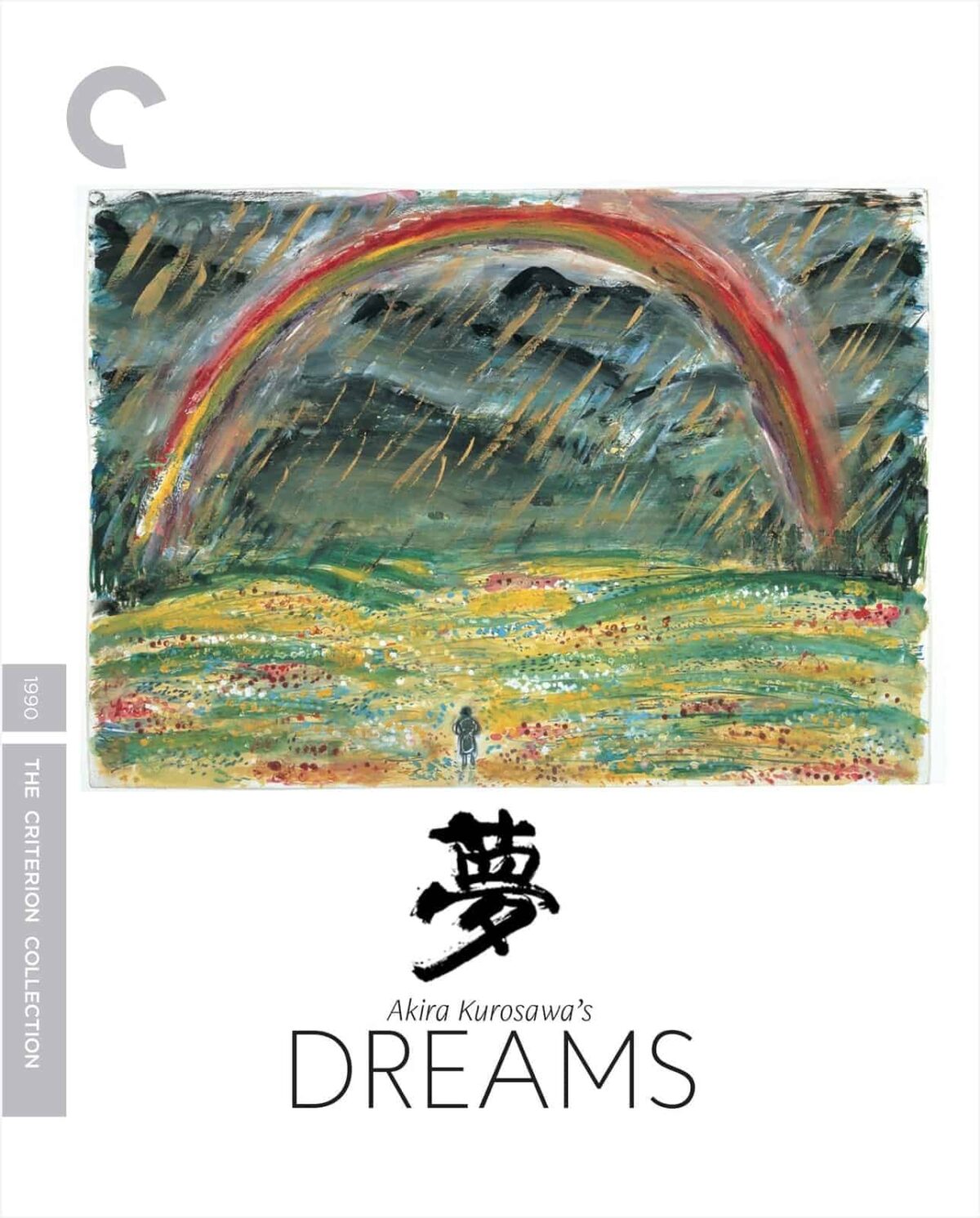He calls them Dreams but many of them are nightmares, along with some memories, a strong autobiographical backdrop and some hopes about how the world ought to be. Dreams by Akira Kurosawa is perhaps one of the most daring films in his career.
As it happens, my last article was about Yasujirō Ozu and it’s interesting to compare these two stalwarts, as they could not have been more different. Ozu likes the static state, he seeks his stories in the everyday life. In a stunning display of underplay, he shines with tiniest of touches. Kurosawa on the other hand, is all about grandeur. He is dynamic and he deals with great tales of pathos, like Shakespeare’s King Lear, that he adapted as Ran. While Kurosawa’s black and white movies are all about dynamics and camera movement, his colour movies display an astonishing range of colours in all their vividity. Few viewings of Kurosawa’s colour movies are mandatory just to appreciate the colour combinations.
Because of its subject, Dreams provides Kurosawa with a lot of creative freedom. The segments, or dreams, do not reach any definitive conclusion, just like normal dreams. Rather, they paint a picture, display a combination of feelings, often frightening and end abruptly.
The first dream starts with a childhood memory of Kurosawa – Sunshine Through The Rain. The house that was built for this resembled Kurosawa’s childhood home. He even wrote his name on the front. The child disobeys his mother and runs off into the rain to witness a fox wedding ceremony or kitsune. When he comes back, his mother refuses to let him in and says he has to kill himself with a knife, unless he can be forgiven by the foxes. The child wonders into the rainbow in search of the foxes. This is the image that you see on the poster.
The Peach Orchad is about a field of peach trees that have been cut down. A young boy wonders following a mysterious girl into the field and meets dolls who talk. The girl is believed to be Kurosawa’s sister who died young due to illness.
In The Tunnel, a military company meets their commander coming back from fighting in World War II. The strange thing is that all the soldiers in the company are dead but they do not know it. Their commander is alive and tries to convince them that they are dead. He repents the fact that he sent them to their death.
One highlight of Dreams is Crows, a segment featuring Martin Scorsese playing Vincent van Gogh. It was a bit disappointing to see van Gogh speaking English instead of French. I mean surely, Scorsese could have handled a couple of pages of French dialogues without much difficulty? That aside, what’s great about this segment is the reproduction of many of van Gogh’s paintings on screen, thanks to the special effects by provided by George Lucas and his company Industrial Light & Magic. The student who is following Van Gogh travels through the landscape of his paintings, to the background score of Chopin’s Prelude Op. 28, No. 15, in D-flat Major.
This dream is followed by two nightmares – Mount Fuji in Red and The Weeping Demon. In some ways, Kurosawa anticipates the Fukushima Daichi nuclear disaster that happened in 2011. It’s a post-apocalyptic world, with radiation wiping out everything, mutating things that are still alive, giving them cancers left and right. The anguish that fills these characters is heartbreaking. Kurosawa mentioned in one of his interviews that young directors should read more, especially Russian authors. These two segments have a strong affinity to Dostoyevsky’s writings.
The last segment is called Village of the Watermills. It was filmed at the Daio Wasabi Farm in Azumino, Nagano Prefecture and is a popular tourist destination due to its abundance of watermills. Kurosawa imagines this world away on modern gadgets and conveniences but living in harmony with nature. It’s a village without any electricity, where villagers don’t cut trees but use the wood from naturally fallen trees. It’s an idealistic place, not entirely practical but nice to dream about.
Dreams is a collection of fragments – they are not really stories, with a well defined beginning, middle and end. Since these are dreams, the great auteur that is Kurosawa gets free reins to display his creativity. That, and producers like Steven Spielberg and George Lucas who gave him full creative freedom. Dreams is Kurosawa at his experimental best, without worrying about plot or other cinematic conventions.
—-
I have subscribed to three streaming movie networks – Netflix, Amazon Prime and Disney+ Hotstar (Equivalent of HBO in India). I requested all three to stream this movie, along with complete Kurosawa’s oeuvre but unfortunately he not interesting enough for them. I found the movie on YouTube. I will not share the link since it’s not legal but you can easily find it in search. This seems to be the only way at present to watch this movie, since I refuse to buy a DVD and add to plastic pollution. Here’s an idea for Amazon and all other sellers. Instead of selling DVDs, why not just provide a link to download the movie in avi or mp4 format? That way, you can cut down on the manufacturing costs as well.


